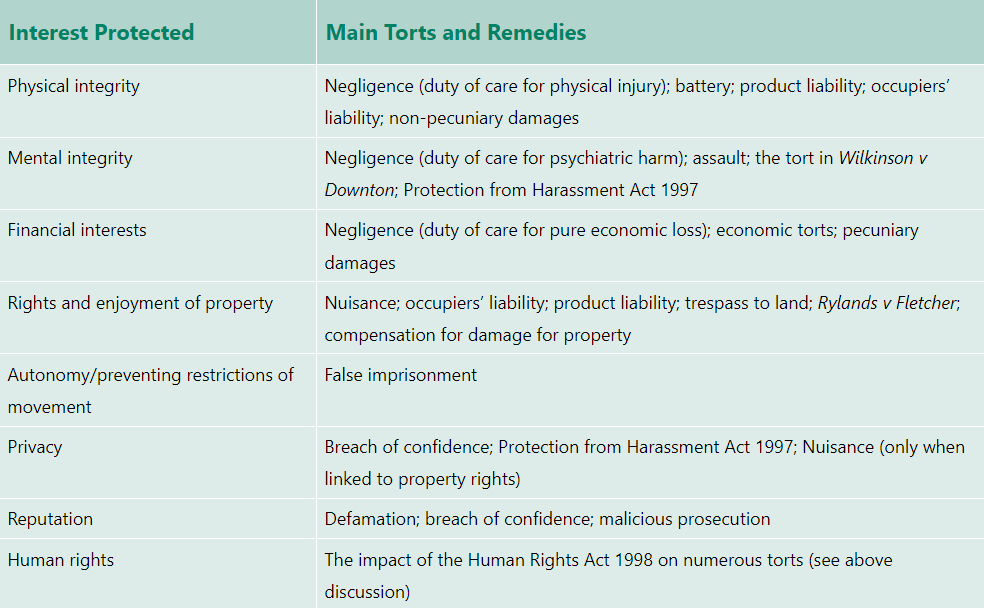Tort Law
Key Points of Tort Law
Definition: Branch of civil law addressing civil wrongs.
Purpose: Provides remedies for individuals harmed by others' actions or inactions.
Scope: Covers personal injury, property damage, and defamation.
Primary Aim: Compensate victims and deter harmful behavior.
Key Concepts:
Negligence
Intentional torts
Strict liability
Evolution: Reflects changes in societal norms and values regarding responsibility and accountability.
Pages 1-5
The human rights act of 1998 impacted Tort Law
Tort law gives rise to powers to protect individuals but these powers are subject to practical limitations
Insurance play an important role in the law of torts
Tortfeasor = wrongdoer
The first recognised torts were the writs of trespass, which became common after 1250
Negligence, the current ‘predominant’ tort, was actually rarely imposed by the court until after 1700, and was not recognised as a separate tort until the 20th century.
1.3Aims of tort law
Tort law simply aims to compensate losses rather than punish or convict
A counter argument against tort law would be that the victim understands and consented to the risk of the tort, or to limit compensation when there is connection to a crime no prevent profiting from wrong doing.
The wrongful death of a loved one, the loss of someone’s reputation, the development of a serious psychiatric illness or the loss of the ability to walk are all consequences of tortious actions that the law struggles adequately to ‘compensate’ with financial damages.
Tort law can also be seen as having an important role in fostering deterrence and accountability. By holding individuals and institutions liable for their actions, and requiring them to compensate those they harm, tortfeasors are held accountable for their actions and future behaviour of the same type is disincentivised.
